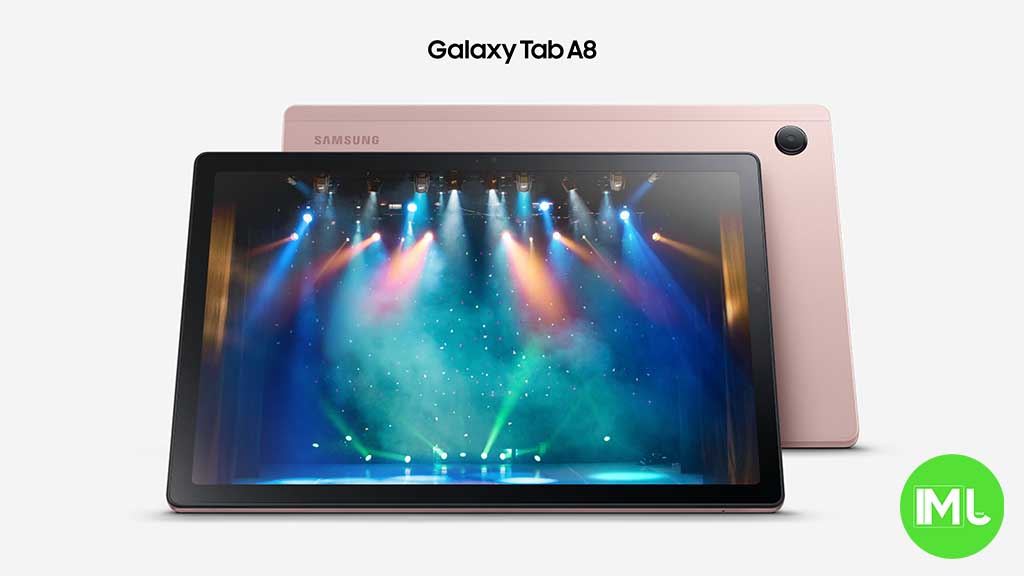Android
Samsung Galaxy Tab A8 gets Android 14 One UI 6.0 update

Samsung begins rolling out Android 14-based One UI 6.0 update to Galaxy Tab A8. It comes as the third Android upgrade to the company’s budget tablet, which was released back in December 2021.
Android 14-based One UI 6.0 comes with a number of new features and improvements across system functionalities. For large-screen devices, the upgrade has pretty much stuff as part of enhancing the multitasking experience.
Paired with the December 2023 security patch, Samsung’s major upgrade for the Galaxy Tab A8 is a big deal. It also opened the way for the tablet to be eligible for the upcoming One UI 6.1 iteration, debuted with the S24 series.
Galaxy Tab A8 was launched with Android 11 out of the box. Later, the company delivered Android 12 and Android 13 upgrades apart from additional One UI Feature Drop releases and quarterly security patches.
- PDA version number: X200XXU3DXB3
Keep pop-up windows open: Instead of minimizing pop-up windows when you go to the Recents screen, pop-ups will now remain open after you leave the Recents screen so you can continue what you were working on.
Link to Windows: Connect your tablet to your Windows PC to check notifications and use apps from your tablet on your PC, transfer files between your devices, and more.
‼ BREAKING ‼
Samsung releases Android 14 One UI 6.0 for Galaxy Tab A8 ‼
PDA: X200XXU3DXB3 | Dec23 Security Patch
Launched w/ Android 11, the Tab A8 already got two OS upgrades.
Android 14 One UI 6.0 is the 3rd major upgrade for the tablet. 🔥#Samsung #Android14 #OneUI6 pic.twitter.com/tBSQlX3bNO
— Yash Rathore (@YashRathoreX) March 21, 2024
Stay up-to-date on Google Pixel, Android & Tech Stuffs by following I M Judge on X/Twitter where you can also discover the latest news, polls, reviews, and new features for Google Apps, Pixel Phones, and the Android operating system.
Do you like this post? Kindly, let us know on X/Twitter: we love hearing your feedback! If you prefer using other social platforms besides X, do follow/join us on Facebook and Telegram.
Android
Google cancels Pixel Tablet 2 amid profit concerns and Android 16 aims to supercharge Gemini’s app control

Google Drops Pixel Tablet 2 Plans Over Profitability Issues
Google has reportedly decided to cancel the Pixel Tablet 2, originally slated for release in 2025, due to concerns about its financial viability. The original Pixel Tablet, launched in 2023, was expected to have a successor, with rumors even hinting at plans for a third-generation device (codenamed “Kiyomi”) targeted for 2027.
What Could Have Been: Pixel Tablet 2 Features
The Pixel Tablet 2 was in its early development phase. It was rumored to feature thinner bezels and a first-party keyboard cover with a built-in touchpad, offering enhanced functionality. A 5G variant was also reportedly in the works. However, internal evaluations suggested the product might struggle to achieve profitability, leading Google to halt the project.
Despite the setback, there is no indication that Google has entirely abandoned large-screen devices. Reports suggest that work on a Tensor G6-powered Pixel Tablet for 2027 might still be in progress. Owners of the current Pixel Tablet can rest assured that their devices will continue receiving software updates.
Android’s Commitment to Large Screens
Google remains invested in optimizing Android for large-screen devices, including tablets and foldables. Features like desktop-style windowing, expected to roll out in Android 15 QPR1 this December, signal ongoing development for better multitasking and productivity on bigger displays.
Additionally, Google’s rumored efforts to unify ChromeOS and Android could enhance large-screen support by enabling seamless desktop-level interactions on Android devices.
Android 16 and Gemini: The Future of App Control
Google is betting heavily on its AI-driven Gemini chatbot, aiming to integrate it deeply across its ecosystem. Currently, Gemini serves as the default assistant for many devices, but its ability to control Android apps has been limited. This could change significantly with the release of Android 16, which introduces a new framework designed to let services like Gemini perform tasks directly within apps.
Gemini Extensions and Their Limitations
At present, Gemini Extensions allow the AI to interact with external services like Google Maps, YouTube, and Google Workspace. These extensions pull data from backend APIs but don’t enable direct control over Android apps. For instance, Gemini can fetch flight details using Google Flights but cannot navigate or book flights directly within the app interface.
While extensions like “Utilities” offer basic control through predefined actions, they lack scalability. Many apps don’t provide public APIs, and relying on screen reading or accessibility inputs would result in inconsistent performance.
Android 16’s Game-Changing API: “App Functions”
Android 16 addresses these challenges with a new feature called “app functions.” According to Google’s developer documentation, app functions are specific pieces of functionality that apps expose to the system. For example, a food delivery app might create an app function labeled “orderFood,” which Gemini could use to initiate an order.
This functionality works by defining app-specific services accessible only to system-level processes. Permissions like EXECUTE_APP_FUNCTIONS and EXECUTE_APP_FUNCTIONS_TRUSTED regulate access, ensuring security and reliability. While these permissions are currently limited to system apps like the Google App and Android System Intelligence, they allow AI systems like Gemini to perform actions inside third-party apps.
A Leap Beyond Google Assistant
The app functions framework could enable Gemini to achieve what Google Assistant never fully managed: seamless multitasking across apps. Imagine using natural language to control apps, schedule tasks, or complete complex workflows. For example, users might book a hotel, order food, or respond to messages—all through voice commands or conversational inputs.
This vision aligns with Google’s 2019 promise of a “new Google Assistant” capable of orchestrating tasks across multiple apps. Android 16’s innovations could finally make this vision a reality, transforming Gemini into a versatile AI agent for Android devices.
Challenges and Adoption
The success of this system will depend heavily on developer adoption. App developers will need to implement app functions to unlock Gemini’s full potential. If widely embraced, this feature could redefine how users interact with Android apps, making AI-driven multitasking and app control a central part of the Android experience.
Conclusion
While the cancellation of the Pixel Tablet 2 marks a step back for Google’s hardware ambitions, the advancements in Android 16 signal exciting possibilities for the future. By empowering Gemini with robust app control capabilities, Google is paving the way for smarter, more intuitive interactions with Android devices. The coming years could see AI becoming an indispensable part of how we use smartphones and tablets.
Android
Google Phone app enhances scam call reporting and new Chromecast update rolled out

The Google Phone app is steadily becoming more user-friendly, especially when dealing with spam and scam calls. In a recent update, Google has introduced and is refining features to empower users to report fraudulent calls more effectively. Meanwhile, a fresh update for the Chromecast with Google TV has begun rolling out, keeping the device optimized as Google preps for larger changes.
Google Phone App: Smarter Tools for Scam Reporting
The Google Phone app has long been a reliable tool for blocking unwanted calls, but it’s taking scam call reporting to the next level. Users can already block or report spam calls directly from the call log by long-pressing an entry and selecting “Block or report.” From there, you can classify the call as either spam or scam and choose whether to block the number. However, this process currently sends minimal context to Google.
An upcoming update is set to introduce a detailed feedback mechanism. Version 155.0.697690833-publicbeta of the app hints at a future feature where users can provide additional insights about scam calls. This update may include:
Enhanced Reporting Options
When reporting a call as a scam, users might see a multi-select menu with questions like:
- What did the scammer ask for?
- Personal information (e.g., full name)
- Passwords
- Electronic payments
- App downloads
- “Not applicable” or “Something else” (with a text entry option)
- What did the scammer pretend to be?
- Government agencies (e.g., FBI, IRS, Social Security Administration)
- Friends or acquaintances
- Law enforcement (e.g., police)
- “Not applicable” or “Something else” (allowing for further details)
This information will be reviewed by Google and could potentially be used to warn other users about known scam numbers or their tactics.
Lookup Button Gets Better Placement
The update also tweaks the Lookup button, which helps identify unknown numbers. While this button has existed in the app, it is now visible within the Google Contacts app when accessed through the Phone app. A banner labeled “Contact info from Phone” further clarifies the context.
Although these features are still in development and not yet available for public use, they highlight Google’s ongoing efforts to combat spam and scam calls.
Chromecast with Google TV: Latest Update Rolling Out
Google is also rolling out a new update for the Chromecast with Google TV, continuing its commitment to improving performance and security.
Update Details
- Version: STTL.240812.006.N1 (upgraded from STTL.240812.006)
- Size: 59.48 MB (smaller than October’s 83.01 MB patch)
- Patch Level: September 2024 (still based on Android 12)
- Changes: General bug fixes and performance improvements.
This marks the eighth update for Chromecast with Google TV in 2023, following monthly patches since February. While these incremental updates focus on stability, they pave the way for a bigger milestone: Android 14.
What’s Next for Chromecast?
The Android 14 update is expected to bring a significant feature called “Home runtime”, enabling Chromecast devices to function as hubs for Matter smart home devices. Google has until the end of the year to roll out this transformative upgrade, and this recent patch could be preparing the device for the transition.
How to Update Your Chromecast
To ensure you have the latest version:
- Navigate to Settings on your Chromecast with Google TV.
- Go to System > About > System update.
- Follow the prompts to install the update.
Conclusion
Google’s latest improvements for the Phone app and Chromecast with Google TV showcase its focus on user experience and security. With smarter scam call reporting on the horizon and updates ensuring devices stay optimized, Google continues to lead in enhancing everyday tech. Stay tuned as these features and updates roll out to users worldwide!
Android
Android 16 enhances notification privacy and introduces integrated screen dimming

Android 16 is already making waves with its first developer preview (DP1), introducing two notable features that improve privacy and usability: automatic hiding of sensitive notifications on the lock screen and seamless integration of screen dimming functionality into the brightness bar. These updates aim to enhance user experience while prioritizing data security and convenience.
Protecting Sensitive Notifications on the Lock Screen
Lock screen notifications offer quick access to updates, but they can expose sensitive information to prying eyes, especially if your device is lost or stolen. Android 16 tackles this issue by automatically hiding the contents of sensitive notifications, particularly those containing one-time passwords (OTPs) and two-factor authentication (2FA) codes.
In Android 16 DP1, notifications deemed “sensitive” by the Android System Intelligence service are automatically redacted on the lock screen, regardless of your notification settings. While users can still control how notifications are displayed—choosing to hide titles, summaries, or all notification content—this feature ensures that sensitive information is protected by default.
This builds on privacy enhancements introduced in Android 15, where untrusted apps were blocked from accessing sensitive notifications, even with notification-reading permissions. Android 16 takes it a step further by ensuring these notifications are redacted on the lock screen itself, safeguarding your data from potential breaches.
Evolving Lock Screen Notification Settings
The updated lock screen notification settings in Android 16 provide flexible options:
- Sensitive Notifications Setting: Allows you to hide titles and summaries for all notifications, while still displaying app icons.
- Lock Screen Notification Control: Lets you choose to show all, hide specific categories like conversations, or hide all notifications entirely.
However, many users stick to default settings, which display full notification content. Android 16 ensures that even in this default mode, sensitive OTP notifications remain hidden, preventing accidental exposure.
Even Dimmer: A Smarter Screen Dimming Solution
Alongside privacy enhancements, Android 16 DP1 introduces “Even Dimmer,” a more integrated version of the existing Extra Dim mode. This feature simplifies the process of reducing screen brightness for comfortable viewing in low-light conditions.
Previously, the Extra Dim feature had to be activated manually via Settings > Accessibility or through a Quick Settings tile. While effective, it required extra steps and could easily be forgotten. With Even Dimmer, the functionality is embedded directly into the brightness bar. Sliding the bar to its lowest point now triggers an additional dimming layer, making it intuitive and accessible.
Why Even Dimmer is a Game-Changer
- Seamless Integration: Even Dimmer removes the need for separate toggles, blending directly into everyday brightness adjustments.
- Quick Deactivation: Simply increasing the brightness disables the feature, reducing the chance of accidentally leaving it on.
- Eliminates Redundancy: The Extra Dim feature will be removed once Even Dimmer is fully rolled out, simplifying the interface further.
Availability and Device-Specific Rollout
Curiously, Even Dimmer is not universally available across all Pixel devices running Android 16 DP1. For now, it seems limited to the base Pixel 9, where the feature is enabled through a device-specific framework overlay. Other Pixel models, including the Pixel 6, 8, and 8a, lack this feature in the current preview.
Google may expand availability in future updates or adjust the rollout based on testing and feedback. However, this selective activation suggests it might be fine-tuning the feature for broader compatibility.
What to Expect from Android 16
While Android 16 is still in its early stages, the inclusion of these features reflects Google’s focus on balancing usability with security. The automatic hiding of sensitive notifications and the streamlined dimming functionality highlight the platform’s evolution toward a smarter, more user-centric design.
As Google refines these features in upcoming developer previews, Android users can look forward to a safer and more convenient experience in the final release. Whether it’s protecting your private data or making your screen easier on the eyes, Android 16 sets a new standard for mobile operating systems.
-

 Apps9 months ago
Apps9 months agoGboard Proofread feature will support selected text
-

 News9 months ago
News9 months agoSamsung USA crafting One UI 6.1.1
-

 News8 months ago
News8 months agoBreaking: Samsung Galaxy S22 may get Galaxy AI features
-

 News8 months ago
News8 months agoSamsung Galaxy S23 Ultra with One UI 6.1 and all S24 AI features revealed
-

 News9 months ago
News9 months agoOne UI 6.1 Auracast (Bluetooth LE Audio) feature coming to many Samsung phones
-

 News9 months ago
News9 months agoSatellite SOS feature coming to Google Pixel phones, evidence leaked
-

 Apps6 months ago
Apps6 months agoGoogle’s fancy new Weather app is finally available for more Android phones
-

 News9 months ago
News9 months agoGoogle Pixel evolves as Europe’s third best selling flagship






